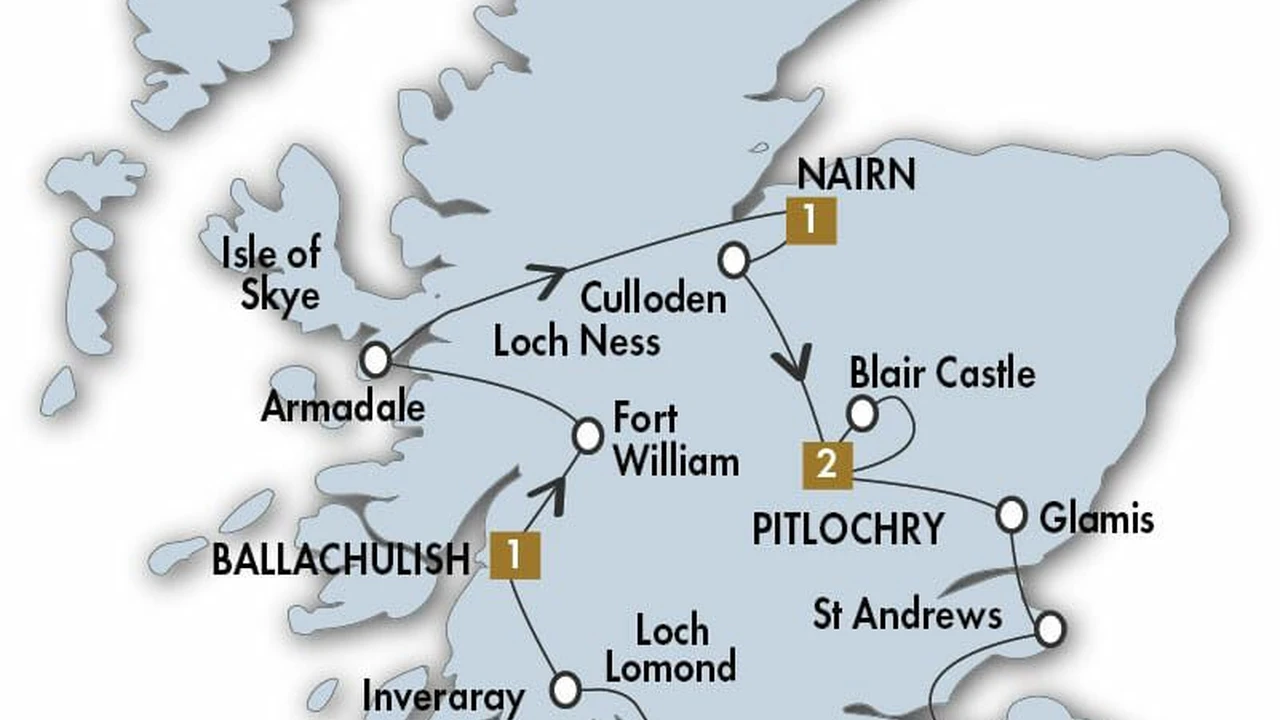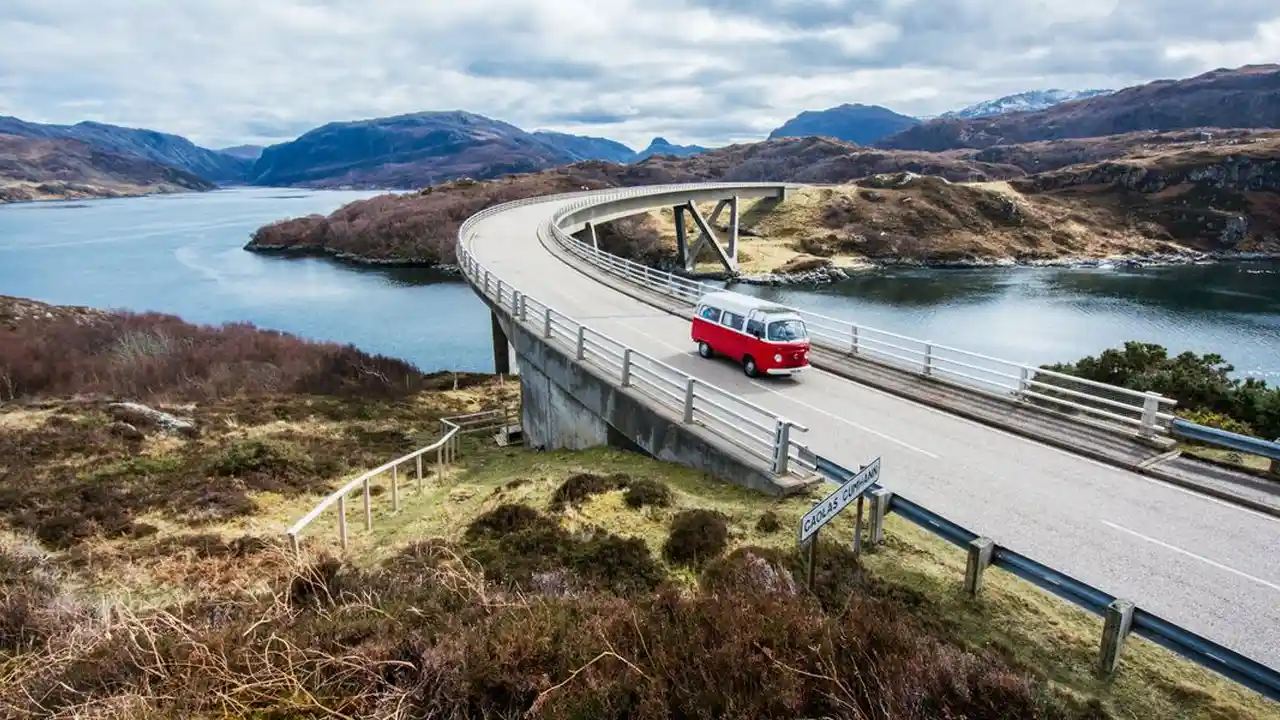Scotland Bus Travel: A Budget-Friendly Guide for Americans
Sample meta description.

Why Choose Bus Travel in Scotland Cost Effective Transportation
So, you're dreaming of Scotland, huh? Castles, lochs, maybe even a glimpse of Nessie? Excellent choice! But before you start picturing yourself sipping whisky in a cozy pub, let's talk logistics. Getting around Scotland can be tricky, especially if you're on a budget. Trains are scenic, but can be pricey. Rental cars give you freedom, but parking in cities like Edinburgh and Glasgow is a nightmare. That's where the trusty bus comes in! It's a fantastic, budget-friendly way to see the country, meet some locals, and avoid the stress of driving on the "wrong" side of the road.
Think of it this way: you can spend all your hard-earned dollars on fancy hotels and Michelin-star restaurants, or you can save a chunk of change by taking the bus and use that extra cash for, say, a whisky tasting tour! The choice is yours, but I'm here to convince you that bus travel in Scotland is not only affordable but also a surprisingly enjoyable experience.
Planning Your Route Essential Scotland Bus Routes
Okay, first things first: planning your route. Scotland's bus network is pretty extensive, covering even some of the most remote areas. Major companies like Scottish Citylink and Stagecoach operate most of the routes, connecting cities, towns, and villages across the country. Before you even pack your bags, hop online and check out their websites. They have timetables, route maps, and fare information. Pro tip: Download their apps! It makes buying tickets and checking schedules on the go super easy.
Some popular routes to consider:
- Glasgow to Edinburgh: A super frequent service, perfect for day trips.
- Edinburgh to Inverness: The gateway to the Highlands! This route offers stunning scenery.
- Inverness to Isle of Skye: Prepare for breathtaking landscapes! This is a must-do for any visitor to Scotland.
- Glasgow to Fort William: Ben Nevis awaits! This route is popular with hikers.
- Edinburgh to St Andrews: For golf lovers and history buffs.
Don't be afraid to explore smaller, less-traveled routes too. You might discover hidden gems that you wouldn't find otherwise. Just be sure to check the timetables carefully, as some rural routes have limited service.
Booking Your Tickets Online vs In Person Scotland Bus Fares
Now, let's talk tickets. You have a few options here. You can buy tickets online in advance, which is often the cheapest option, especially if you book early. You can also buy tickets at bus stations or directly from the driver. However, buying on the bus can sometimes be more expensive, and you might not be guaranteed a seat, especially during peak season. I highly recommend booking online whenever possible.
As for fares, they vary depending on the route and the time of day. Generally speaking, longer routes cost more, and peak-hour travel is pricier. Keep an eye out for special deals and discounts. Scottish Citylink, for example, often offers "Megabus" fares on certain routes, which can be incredibly cheap (think a few pounds!). Student discounts are also available with a valid student ID.
Consider purchasing a day ticket or a multi-day pass if you plan on doing a lot of bus travel. These passes can save you a significant amount of money compared to buying individual tickets.
What to Expect Onboard Comfort and Amenities on Scottish Buses
Okay, you've got your ticket, you're at the bus station, now what? Scottish buses are generally clean and comfortable. Most have comfortable seating, air conditioning, and free Wi-Fi. Some even have USB charging ports, so you can keep your devices powered up.
On longer routes, there's usually a toilet on board. However, it's always a good idea to use the restroom at the bus station before you board, just in case. Many buses also have luggage compartments, so you don't have to lug your suitcase onto your lap.
Don't be afraid to strike up a conversation with your fellow passengers. Scots are generally friendly and welcoming, and you might learn some interesting things about the local area.
Tips for a Smooth Bus Journey Luggage Restrictions and More
Here are a few tips to make your bus journey as smooth as possible:
- Arrive early: Give yourself plenty of time to find your bus and get settled.
- Check the luggage restrictions: Make sure your luggage meets the size and weight requirements.
- Bring snacks and drinks: Especially on longer routes.
- Download offline maps: In case the Wi-Fi is spotty.
- Keep your valuables safe: Don't leave your phone or wallet unattended.
- Be prepared for delays: Traffic and weather conditions can sometimes cause delays.
- Learn a few basic Scottish phrases: "Cheers" (thank you), "Aye" (yes), "Sláinte mhath" (good health, used as a toast).
Product Recommendations for Bus Travel in Scotland Essential Gear
Alright, let's talk gear! Here are a few products that will make your Scottish bus adventures even better:
- Noise-canceling headphones: Essential for blocking out chatty passengers or noisy engines. I personally recommend the Sony WH-1000XM5 (£380). They're pricey, but the sound quality and noise cancellation are top-notch. For a more budget-friendly option, consider the Anker Soundcore Life Q30 (£80). They offer great value for the price. Use case: blocking out noise on long journeys, listening to music or podcasts.
- Portable charger: Don't get caught with a dead phone! The Anker PowerCore 10000 (£25) is a compact and reliable option. Use case: Charging your phone, tablet, or other devices on the go.
- Travel pillow: For those long overnight journeys. The Cabeau Evolution S3 Travel Pillow (£35) is a popular choice, known for its comfort and support. Use case: Sleeping comfortably on long bus rides.
- Water bottle: Stay hydrated! A reusable water bottle like the Hydro Flask 32 oz (£40) is a great choice. Use case: Staying hydrated on long journeys, reducing plastic waste. Cheaper alternatives exist for around £10-£15.
- Backpack: A comfortable and spacious backpack is essential for carrying your belongings. The Osprey Farpoint 40 (£120) is a popular choice for travelers. Use case: Carrying your essentials for day trips and longer journeys. A smaller daypack can be bought for around £30.
- Travel Adapter: If you are coming from America, you will need a travel adapter. I recommend the BESTEK Universal Travel Adapter (£20). Use case: Charging your electronic devices.
Comparing Bus Companies Scottish Citylink vs Stagecoach
Two major bus companies operate in Scotland: Scottish Citylink and Stagecoach. Both offer extensive networks, but there are some key differences:
- Scottish Citylink: Generally focuses on longer, intercity routes. Often offers "Megabus" fares, which can be incredibly cheap. Their website and app are user-friendly.
- Stagecoach: Operates both intercity and local routes. Offers a wider range of day tickets and multi-day passes. Their app can be a bit clunky at times.
Which one should you choose? It depends on your itinerary. If you're primarily traveling between major cities, Scottish Citylink might be the better option. If you're exploring smaller towns and villages, Stagecoach might be more convenient.
Understanding Bus Station Facilities Edinburgh and Glasgow Bus Stations
Knowing what to expect at the bus station can make your trip much smoother. Edinburgh and Glasgow, being major cities, have well-equipped bus stations. Expect to find:
- Ticket counters: For buying tickets and getting information.
- Waiting areas: With seating and sometimes charging points.
- Toilets: Usually requiring a small fee.
- Cafes and shops: For snacks, drinks, and last-minute essentials.
- Luggage storage: Sometimes available for a fee.
- Information boards: Displaying departure times and platform numbers.
Smaller bus stations may have fewer facilities, but they usually have at least a waiting area and a toilet.
Accessibility on Scottish Buses Wheelchair Access and Assistance
Most Scottish buses are now wheelchair accessible, with ramps or lifts to assist passengers with mobility issues. If you require assistance, it's best to contact the bus company in advance to let them know your needs. Drivers are usually happy to help with boarding and disembarking.
Safety Tips for Bus Travel in Scotland Keeping Your Belongings Secure
While bus travel in Scotland is generally safe, it's always a good idea to take precautions:
- Keep your valuables close: Don't leave your phone, wallet, or passport unattended.
- Be aware of your surroundings: Pay attention to who's around you.
- Don't accept drinks or food from strangers: This is a general safety rule, regardless of where you are.
- Report any suspicious activity: To the driver or to the police.
Enjoying the Scenery Scotland Bus Travel Photo Opportunities
One of the best things about bus travel in Scotland is the opportunity to enjoy the stunning scenery. Don't forget to bring your camera! Some of the most scenic routes include the Inverness to Isle of Skye route, the Glasgow to Fort William route, and the Edinburgh to St Andrews route.
Try to get a window seat for the best views. And don't be afraid to ask the driver to stop if you see something particularly interesting. They're usually happy to oblige, as long as it's safe to do so.
Dealing with Delays and Disruptions What to Do When Things Go Wrong
Sometimes, despite your best efforts, things go wrong. Buses can be delayed due to traffic, weather, or mechanical problems. If your bus is delayed, don't panic. Check the bus company's website or app for updates. You can also ask the driver or a member of staff for information.
If your bus is cancelled, the bus company is usually responsible for providing alternative transportation or a refund. Be sure to keep your ticket as proof of purchase.
Scottish Bus Travel and the Environment Sustainable Tourism
Choosing bus travel over other forms of transportation is a more environmentally friendly option. Buses produce less carbon emissions per passenger than cars or planes. By taking the bus, you're helping to reduce your carbon footprint and support sustainable tourism in Scotland.
Learning Scottish Culture Through Bus Travel Interacting with Locals
Bus travel is a great way to experience Scottish culture and interact with locals. You'll meet people from all walks of life, and you'll have the opportunity to learn about their experiences and perspectives.
Don't be afraid to strike up a conversation with your fellow passengers. Scots are generally friendly and welcoming, and they're often happy to share their knowledge of the local area.
Alternative Transportation Options in Scotland Trains and Rental Cars
While buses are a great option for budget-conscious travelers, there are other transportation options available in Scotland:
- Trains: Faster and more comfortable than buses, but also more expensive.
- Rental cars: Give you the freedom to explore at your own pace, but can be expensive and stressful, especially in cities.
- Ferries: For traveling to the islands.
- Cycling: A great way to see the countryside, but requires a good level of fitness.
The best option for you will depend on your budget, your itinerary, and your personal preferences.
Resources for Planning Your Scotland Bus Trip Websites and Apps
Here are some useful resources for planning your Scotland bus trip:
- Scottish Citylink: https://www.citylink.co.uk/
- Stagecoach: https://www.stagecoachbus.com/
- Traveline Scotland: https://www.travelinescotland.com/ (for planning journeys across different modes of transport)
- Rome2Rio: https://www.rome2rio.com/ (for comparing different transportation options)
:max_bytes(150000):strip_icc()/277019-baked-pork-chops-with-cream-of-mushroom-soup-DDMFS-beauty-4x3-BG-7505-5762b731cf30447d9cbbbbbf387beafa.jpg)






